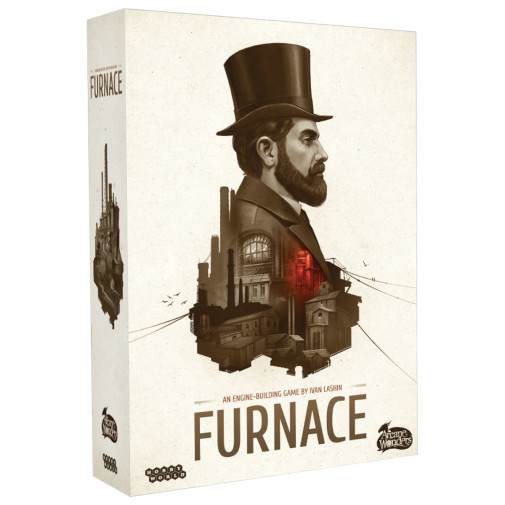We use cookies to make your experience better. To comply with the new e-Privacy directive, we need to ask for your consent to set the cookies. Learn more.
Furnace Game
To be a successful industrialist, you need to have a keen eye for opportunities and know how to chain events together for the best advantage in a competitive corporate arena. In this strategic card bidding and tableau building game, players compete to purchase companies represented by company cards with the goal to parlay them into earnings. Furnace is played over four rounds and the person with the most money wins! An overview of game play follows:
- Each player gets a start-up card that gives them initial resources and production phase actions.
- Game Rounds consist of two phases each. There will be four rounds played during the game.
- Phase One: The first phase is the auction phase where company cards are offered for bidding. Each player has four Bidding Discs numbered 1, 2, 3, 4.
- Taking turns, each player bids on cards by placing a disc on them. If they want to win the bid and own the card for phase two actions, they place their highest numbered disc on it. No two players can place a disc with the same number on a card and each player can only place one disc on a card.
From left to right, each card’s auction is resolved. Company cards have both compensation and production action values. Players that do not win the auction receive compensation from each card they bid on and did not win. Compensation will either be acquiring resources which is termed extraction or processing which is trading specific resources for other resources. Compensation is awarded based on a multiplier of the reward times the value of the disc placed on the card. Players who placed the highest disc on any card, places it in their card tableau area.
- Phase Two: The second phase of each round is the production phase. During this phase players resolve all company cards that they have acquired, including their starting card. Each card starts with its basic side up. This side of the card has one action which includes either receiving resources or processing resources by exchanging them for needed resources. Using upgrade tokens, players may upgrade cards and flip them to their other side which adds a second tier of rewards to that card. The strategy here is to process each card in the best order during this phase to generate resources that are used by other cards in this phase to gain the best possible production overall.
- At the end of each round, the first player token is passed to the left for the next round and new company cards are dealt. At the end of round four, the person with the most money wins!
Although Furnace is a 2-4 player game which I thoroughly enjoy, in my opinion it really shines best at a 3-4 player count. Its 30 to 60-minute game time works well when you want a quick game that is easy to learn. ~Marsha
Furnace is an engine-building Eurogame in which players take on the roles of 19th-century capitalists building their industrial corporations and aspiring to make as much money as they can by purchasing companies, extracting resources, and processing them in the best combinations possible.
Please also see our Logic - Games section for more excellent strategy games.
| Product Format: | Other |
|---|---|
| Brand: | Arcane Wonders |
| Grades: | 7-AD |
| EAN/UPC: | 853211004721 |
| Length in Inches: | 10.875 |
| Width in Inches: | 7.6875 |
| Height in Inches: | 2.625 |
| Weight in Pounds: | 1.35 |

